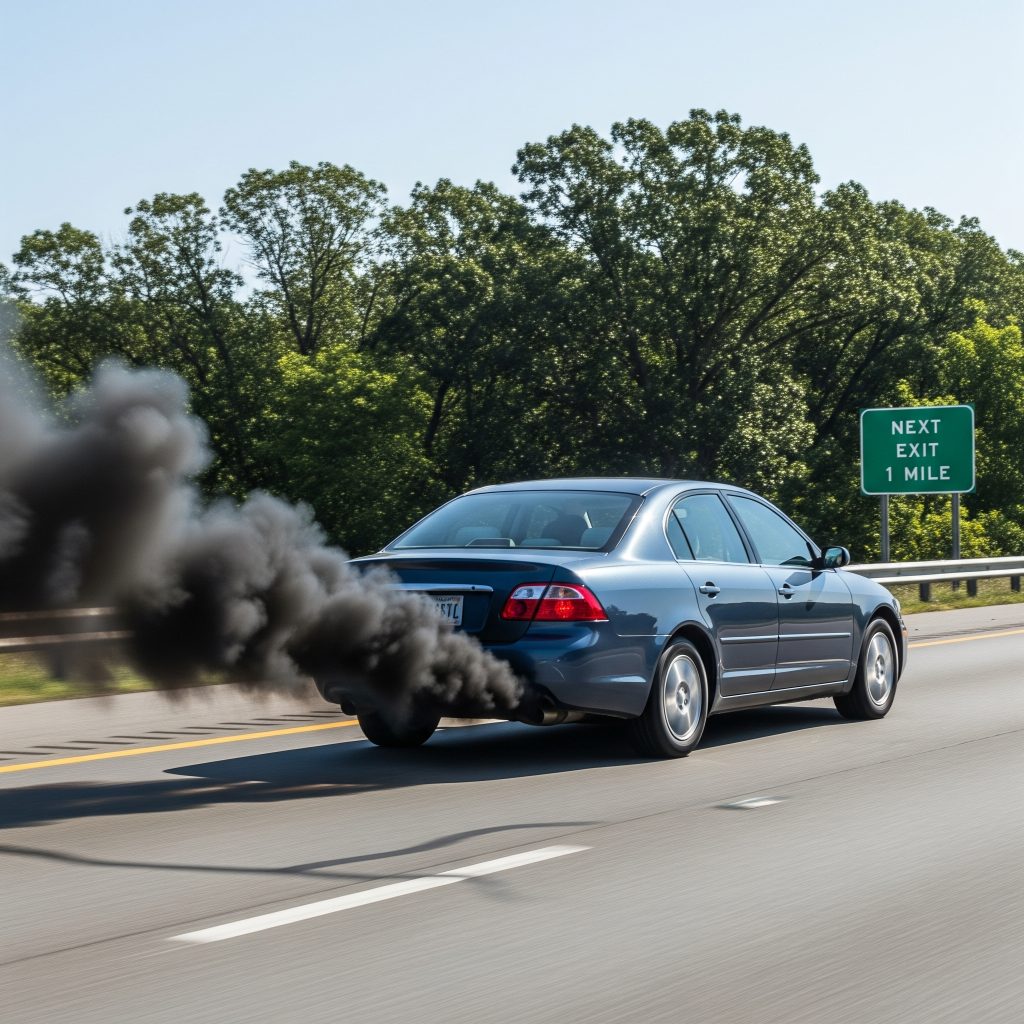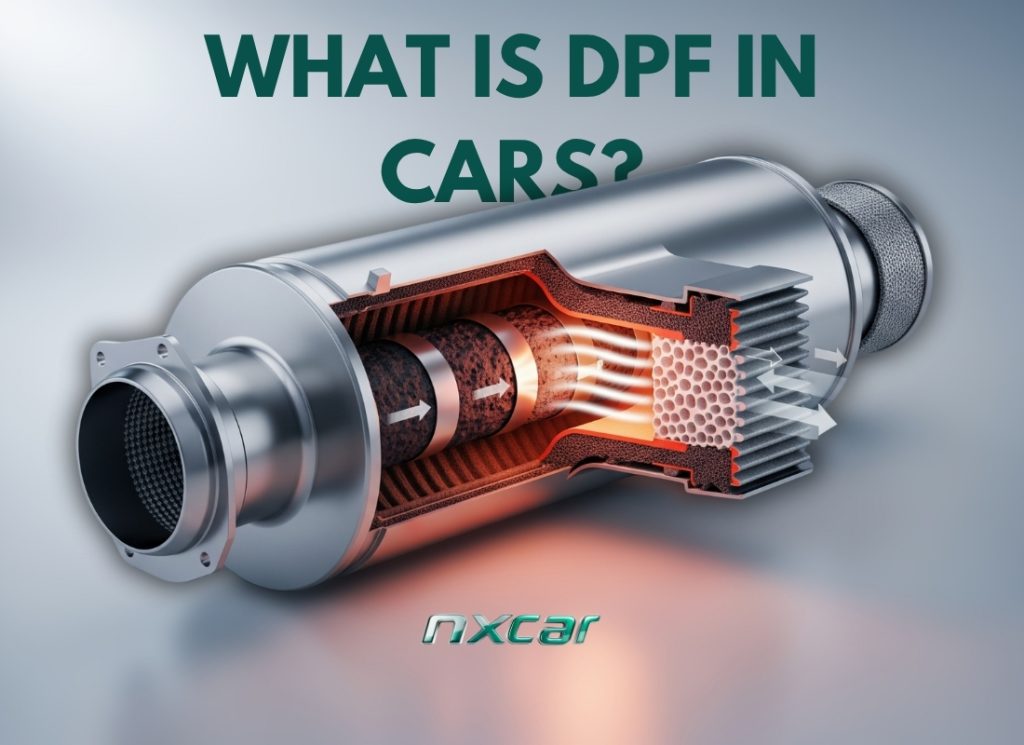What is DPF in Cars? It’s a question that often surfaces only when a warning light flares up on your dashboard—or worse, when your car suddenly slips into limp mode. Imagine cruising along the highway, and without warning, your vehicle chokes, struggles, and sputters—crippled by an unseen enemy lodged within its exhaust system. Beneath your car’s polished exterior lies a component few understand but many come to resent: the Diesel Particulate Filter (DPF).
This intricate mesh of ceramic honeycomb is engineered to capture the soot and ash expelled by diesel engines. But when it clogs—often due to short trips, low-quality fuel, or neglected maintenance—the consequences can be costly. Reduced fuel efficiency. Loss of engine performance. In extreme cases, catastrophic engine damage. And yet, despite its significance, many drivers are left scratching their heads, asking: What is DPF in Cars? Why is it there? What does it do? And why is it causing me so much trouble?
The confusion is understandable. DPF systems are a product of stringent emissions regulations—a silent sentinel standing between your vehicle and the environment. While it serves a noble purpose, it can quickly turn into a mechanical nemesis if ignored.
Fortunately, knowledge is your most powerful tool. By demystifying the DPF system, understanding how it functions, why it fails, and how to maintain it, you can avoid costly repairs and keep your vehicle running smoothly. In the sections that follow, explore everything you need to know about this often-overlooked yet mission-critical component. Let’s decode the truth behind the question: What is DPF in Cars?
The Critical Role of DPFs in Today’s Diesel Vehicles
Modern diesel engines are marvels of efficiency and torque. Yet, they come with an environmental caveat—particulate matter, a byproduct of diesel combustion, poses serious health and ecological risks. Enter the Diesel Particulate Filter (DPF)—an unassuming but critical component designed to trap and incinerate these microscopic invaders before they exit the tailpipe.
A Silent Guardian of Emissions Compliance
To meet the ever-tightening emission regulations enforced worldwide, DPFs have become non-negotiable in diesel-powered vehicles. They work quietly behind the scenes, capturing soot and ash in a labyrinth of ceramic channels and periodically burning them off during regeneration cycles. This isn’t just about legal compliance—it’s about cleaner air and sustainable mobility.
Key Reasons DPFs Are Indispensable
- Pollution Control: DPFs reduce diesel particulate emissions by up to 85%, slashing the release of harmful black carbon into the atmosphere.
- Health Protection: By trapping carcinogenic particles, they help protect urban populations from respiratory diseases and long-term exposure risks.
- Performance Optimization: A well-maintained DPF ensures smoother engine operation and consistent power delivery.
- Future-Proofing: Vehicles without DPFs face bans in low-emission zones and tighter scrutiny during inspections.
The Bigger Picture
Without a functioning DPF, diesel engines would revert to their older, soot-spewing selves—undoing decades of environmental progress. Still, many drivers find themselves asking: What is DPF in Cars? It’s more than just a filter. It’s a gatekeeper of air quality, a protector of public health, and a linchpin in the clean diesel movement.
Neglect it, and the consequences ripple beyond the engine bay. Embrace it, and the rewards span from regulatory peace of mind to a healthier planet.
Also Read – Common Rail Direct Injection (CRDI) Diesel Engine Explained
How Does a DPF Work?
Diesel engines offer unmatched torque and fuel economy, making them the preferred choice for long-distance and heavy-duty driving. However, they also emit microscopic pollutants—soot and ash—that pose significant risks to human health and the environment. To address this, automakers introduced the Diesel Particulate Filter (DPF), a vital component designed to trap and eliminate particulate matter. Still asking, What is DPF in Cars? It’s a high-tech emissions control device that plays a critical role in ensuring diesel engines remain environmentally compliant without compromising performance.
Let’s break down the DPF’s work process step by step.
Soot Trapping – The Initial Capture

When diesel fuel combusts in the engine, it releases exhaust gases filled with fine carbon particles—commonly known as soot. These particles are dangerous if released into the air, contributing to respiratory problems and environmental degradation.
To prevent this, the DPF filters exhaust gases through a wall-flow ceramic structure, usually made of cordierite or silicon carbide. This honeycomb matrix features:
- Alternating blocked channels, forcing exhaust to pass through porous walls.
- Micro-sized pores, designed to physically trap soot particles.
- A tight network, ensuring maximum surface area for filtration without disrupting flow.
As the exhaust flows through the DPF, over 90% of soot is captured, leaving significantly cleaner gases to exit the tailpipe.
Accumulation – The Build-Up Phase
Though efficient at trapping soot, the DPF doesn’t remove it outright. Over time, soot accumulates inside the filter, forming a dense layer along the walls of the ceramic structure. This accumulation can:
- Increase exhaust backpressure, forcing the engine to work harder.
- Reduce fuel economy and throttle response.
- Trigger dashboard warnings, alerting the driver of a potential blockage.
If left untreated, excessive soot build-up can cause irreversible damage to both the DPF and the engine. This is why the regeneration process is essential.
Regeneration – The Burn-Off Process
To maintain the DPF’s functionality, the system must regularly clean itself by burning off the accumulated soot. This is known as regeneration, and it occurs in one of three ways:
Passive Regeneration
- Occurs automatically when the vehicle is driven at sustained speeds (e.g., highway driving).
- The high exhaust temperatures (above 600°C) naturally ignite the soot and convert it into carbon dioxide.
- Requires no driver input and is the most efficient method—if driving conditions allow it.
Active Regeneration
- Triggered by the Engine Control Unit (ECU) when soot levels reach a threshold.
- The ECU injects a small amount of extra fuel post-combustion to raise exhaust temperatures.
- Typically occurs every 300–500 km, depending on driving patterns.
- The driver may notice increased fuel usage, a rise in idle RPM, or a brief drop in performance.
Forced Regeneration
- Initiated by a technician using diagnostic tools when the DPF is heavily clogged.
- The engine is run under controlled conditions at high temperature to burn off excess soot.
- This is a last resort and can be risky if performed too frequently.
The Bigger Picture
By cycling through these three stages—soot trapping, accumulation, and regeneration—the DPF maintains a delicate balance between performance and emissions compliance. It’s a system of precision and engineering foresight that transforms raw exhaust into cleaner output.
So, What is DPF in Cars? It’s not just a filter—it’s a dynamic, self-maintaining emissions warrior embedded deep within your diesel engine’s exhaust system. Without it, modern diesel engines would fall far short of today’s environmental expectations.
Also Read – 7 Safest Cars Under 10 Lakh in India That Offer Maximum Protection
DPF Regeneration Explained
DPF regeneration is the self-cleaning process that prevents diesel particulate filters from becoming clogged with soot. Over time, as soot accumulates inside the filter, it begins to restrict exhaust flow and affect engine performance. To combat this, the system heats up the filter to burn off the trapped soot, converting it into harmless carbon dioxide.
There are three main types of regeneration:
- Passive regeneration occurs naturally during long drives when exhaust temperatures are high enough.
- Active regeneration is triggered by the engine control unit when soot levels reach a critical point, injecting extra fuel to raise temperatures.
- Forced regeneration is a manual process done in workshops when the filter is severely blocked.
Understanding this process is crucial for anyone asking, What is DPF in Cars? It’s the key to keeping emissions low, maintaining fuel efficiency, and ensuring the long-term health of your diesel vehicle.
Passive Regeneration: The Natural Clean-Up Process
Passive regeneration is the most seamless and unobtrusive method by which a Diesel Particulate Filter (DPF) maintains its efficiency. It occurs organically while the vehicle is being driven, particularly at higher speeds and steady engine loads—conditions typically found during motorway or highway travel.
Still wondering, What is DPF in Cars? It’s an emissions device that captures harmful soot. Passive regeneration is its silent method of purging that build-up.
How It Works
- Exhaust Temperature: When the exhaust temperature reaches around 350–600°C during normal driving, passive regeneration is triggered automatically.
- Soot Combustion: The high heat incinerates the accumulated soot particles inside the DPF, converting them into carbon dioxide.
- No ECU Intervention: This process requires no fuel injection or manual trigger—it’s fully automated and invisible to the driver.
Pros of Passive Regeneration
- Fuel-Efficient: No additional fuel is consumed to raise temperatures.
- No Downtime: The vehicle doesn’t need to stop or alter its performance for regeneration to occur.
- Low Maintenance: Reduced wear and tear on engine components compared to forced methods.
Cons of Passive Regeneration
- Requires Long Drives: Typically only happens during extended, high-speed driving.
- Ineffective in City Traffic: Stop-start urban routes often fail to generate the required exhaust temperatures.
- No Driver Control: There’s no manual way to initiate it if conditions aren’t met.
Challenges to Consider
- Short Trips = Clogged Filter: Drivers who only make short commutes may never reach optimal conditions for passive regeneration.
- Dashboard Warnings: Without proper regeneration, soot builds up, triggering warnings and potentially leading to forced regeneration.
- Reduced Lifespan: Persistent failure to regenerate passively can reduce the DPF’s lifespan and lead to costly repairs.
For those asking, What is DPF in Cars?, understanding passive regeneration is essential. It’s the DPF’s first and most efficient line of defense against blockage and engine strain.
Active Regeneration: Engine-Controlled Soot Burn-Off
When passive regeneration isn’t sufficient—typically due to frequent short trips or stop-start city driving—the vehicle’s Engine Control Unit (ECU) initiates active regeneration. This method ensures the Diesel Particulate Filter (DPF) doesn’t become dangerously clogged with soot.
For those asking, What is DPF in Cars?, it’s an emissions control device designed to trap particulate matter. Active regeneration is a controlled process to maintain that functionality when natural conditions fall short.
How It Works
- Trigger Point: When soot levels reach a predetermined threshold (usually around 45–70% full), the ECU steps in.
- Fuel Injection: A small amount of additional fuel is injected post-combustion to raise the exhaust temperature to around 600°C.
- Soot Combustion: At this temperature, the trapped soot oxidizes and burns off, turning into carbon dioxide.
- Duration: The process typically takes 10–15 minutes and often begins during normal driving.
Pros of Active Regeneration
- Automatic Activation: The ECU handles the entire process without driver input.
- Efficient Cleaning: Helps maintain filter performance even in unfavorable driving conditions.
- Minimal Disruption: Can be completed during regular use of the vehicle if conditions are ideal.
Cons of Active Regeneration
- Increased Fuel Consumption: The added fuel injection results in temporary fuel inefficiency.
- Interrupted Cycles: If the drive is too short, the regeneration process may not complete, causing repeated cycles.
- Potential Oil Dilution: Unburned fuel can seep into the oil sump, diluting the engine oil over time.
Common Challenges
- Urban Driving Issues: Frequent short trips interrupt the regeneration process, leading to soot build-up.
- Warning Lights: An incomplete or failed regeneration may trigger a DPF warning light.
- Manual Intervention: Repeated failure can necessitate a forced regeneration at a service center.
Active regeneration is essential for modern diesel engines that don’t consistently reach passive regeneration thresholds. A deeper understanding of this process answers the vital question: What is DPF in Cars? It’s a complex, adaptive system that relies on strategic combustion to stay functional and clean.
Forced Regeneration: The Last Resort for a Blocked DPF
When both passive and active regeneration fail to clear excessive soot from a Diesel Particulate Filter (DPF), the vehicle may enter limp mode or display persistent warning lights. At this stage, forced regeneration becomes necessary—a manual, high-temperature cleaning process conducted by professionals using diagnostic tools.
To understand the bigger picture behind this process, it’s worth revisiting the question: What is DPF in Cars? It’s a filtration system designed to trap and eliminate harmful diesel soot. Forced regeneration is the emergency reset when all else fails.
How Forced Regeneration Works
- Diagnostic Trigger: A mechanic connects a diagnostic scanner to the ECU to assess soot levels.
- Controlled Environment: The vehicle is parked and run under strict conditions—typically at a garage or service center.
- High-Temperature Burn-Off: The system artificially elevates exhaust temperatures (600–650°C) to incinerate built-up soot and ash.
- Duration: The process can last between 30 minutes to over an hour, depending on severity.
Pros of Forced Regeneration
- Clears Heavy Blockage: Highly effective at removing deep soot accumulation.
- Restores Performance: Can return engine output and fuel efficiency to normal levels.
- Prevents DPF Replacement: A timely forced regeneration may save the filter from needing a costly replacement.
Cons of Forced Regeneration
- Labor Intensive: Requires professional tools and controlled conditions.
- Not DIY-Friendly: Cannot be done by drivers without diagnostic equipment.
- Heat Stress: High temperatures may cause long-term wear on exhaust components if used frequently.
Challenges to Consider
- Warning Signs Ignored: Delaying forced regeneration can lead to irreversible DPF damage.
- Increased Maintenance Cost: Repeated forced regenerations indicate underlying driving habit issues.
- System Dependency: Vehicles reliant on frequent forced regeneration may signal failing sensors or poor fuel quality.
For those still wondering, What is DPF in Cars?, forced regeneration is its final safety net—a critical maintenance intervention to restore clean emissions and vehicle health.
DPF Maintenance: Keeping Your Diesel Engine Breathing Clean
Maintaining a Diesel Particulate Filter (DPF) isn’t just about avoiding warning lights—it’s about preserving performance, fuel economy, and long-term engine health. A poorly maintained DPF can lead to clogged exhaust systems, increased emissions, and expensive repairs. For those still unsure, What is DPF in Cars? It’s a critical emissions component that captures harmful soot particles before they pollute the atmosphere.
Effective DPF maintenance is proactive, not reactive. It begins with understanding your driving habits and making small changes that support optimal filter function.
Best Practices for DPF Maintenance
- Drive at Sustained Speeds: Regular highway driving allows passive regeneration to take place naturally.
- Avoid Short Trips: Frequent stop-start driving doesn’t allow the DPF to reach the necessary temperature to burn off soot.
- Use Low-Ash Engine Oil: Specially formulated oil reduces the amount of ash left behind during combustion.
- Fuel Quality Matters: Use high-grade diesel to minimize soot production and support clean combustion.
- Watch the Dashboard: Don’t ignore DPF or engine warning lights—early intervention prevents costly damage.
Professional Servicing Tips
- Periodic Diagnostic Scans: Mechanics can check soot levels and DPF health using scan tools.
- Forced Regeneration (if needed): When regular driving fails to clean the filter, professionals can perform a high-temperature clean.
- DPF Cleaning Services: In extreme cases, ultrasonic or thermal cleaning can restore heavily blocked filters.
Long-Term Benefits
- Enhanced Fuel Economy
- Extended Engine Life
- Lower Emissions
- Compliance with Environmental Regulations
Understanding What is DPF in Cars? is the first step. Maintaining it ensures your diesel vehicle remains efficient, clean, and reliable—mile after mile. Neglect it, and you’re risking more than just your check engine light.
| Problem | Cause | Symptom | Solution |
|---|---|---|---|
| Soot Clogging | – Frequent short trips – Low-speed driving – Interrupted regeneration cycles – Excessive idling – Engine issues producing excess soot – Poor fuel quality |
– DPF warning light – Reduced engine power – Increased fuel consumption – Harsh engine noise – Vehicle enters limp mode |
– Attempt Passive or Active Regeneration as per owner’s manual – Forced Regeneration by technician – Professional DPF cleaning – Address underlying engine issues |
| Ash Accumulation | – Natural long-term build-up of ash from engine oil additives – Use of non-low-ash oil – Lack of regular maintenance |
– Persistent DPF warning light – Power loss – Increased fuel consumption – Ineffective regeneration |
– Professional DPF cleaning (ultrasonic or thermal) – DPF replacement if cleaning fails – Switch to correct low-ash oil |
| Melted/Damaged DPF Core | – Excessive regeneration temperatures due to faulty injectors or turbo – Physical impact from road debris – Engine overheating |
– Severe exhaust restriction – Metallic/rattling exhaust noise – Overheating engine – Instant warning light |
– DPF replacement – Address root cause (e.g., turbo or injector malfunction) – Inspect for structural damage |
| Sensor Malfunction | – Faulty differential pressure, temperature, or oxygen sensors – Electrical connection issues – Moisture ingress or corrosion |
– DPF and engine warning lights – Incorrect or failed regeneration – Poor throttle response – Regeneration not initiating |
– Use diagnostic scanner to identify faulty sensors – Replace affected sensors – Check and clean electrical connectors |
| Failed Regeneration | – Premature shutdown of engine during regeneration – Frequent stop-start driving – Faulty sensors or software glitches |
– Rapid build-up of soot – Decreased fuel economy – Warning lights triggered – Regeneration attempts too frequent or failing |
– Complete a long drive at constant speed (30–45 mins) – ECU update or software reflash – Force regeneration if required |
| Backpressure Buildup | – Severely clogged DPF – Blocked exhaust system – Turbo malfunction |
– Engine struggles under load – Turbocharger whine – Increased oil consumption – Poor acceleration |
– Inspect and clean exhaust system – Check and replace DPF or turbo if needed – Run diagnostic scan for exhaust pressure |
Conclusion
Understanding What is DPF in Cars? is essential for every modern diesel vehicle owner. Far more than a passive component, the Diesel Particulate Filter is a sophisticated safeguard against harmful emissions and declining engine performance. From soot filtration to regeneration cycles, its role is both dynamic and indispensable. Regular maintenance, informed driving habits, and timely diagnostics can extend its life and preserve fuel efficiency. Ignoring the warning signs, however, can lead to costly repairs and environmental penalties. In today’s eco-conscious world, a well-functioning DPF isn’t just a mechanical necessity—it’s a commitment to cleaner, smarter motoring.




